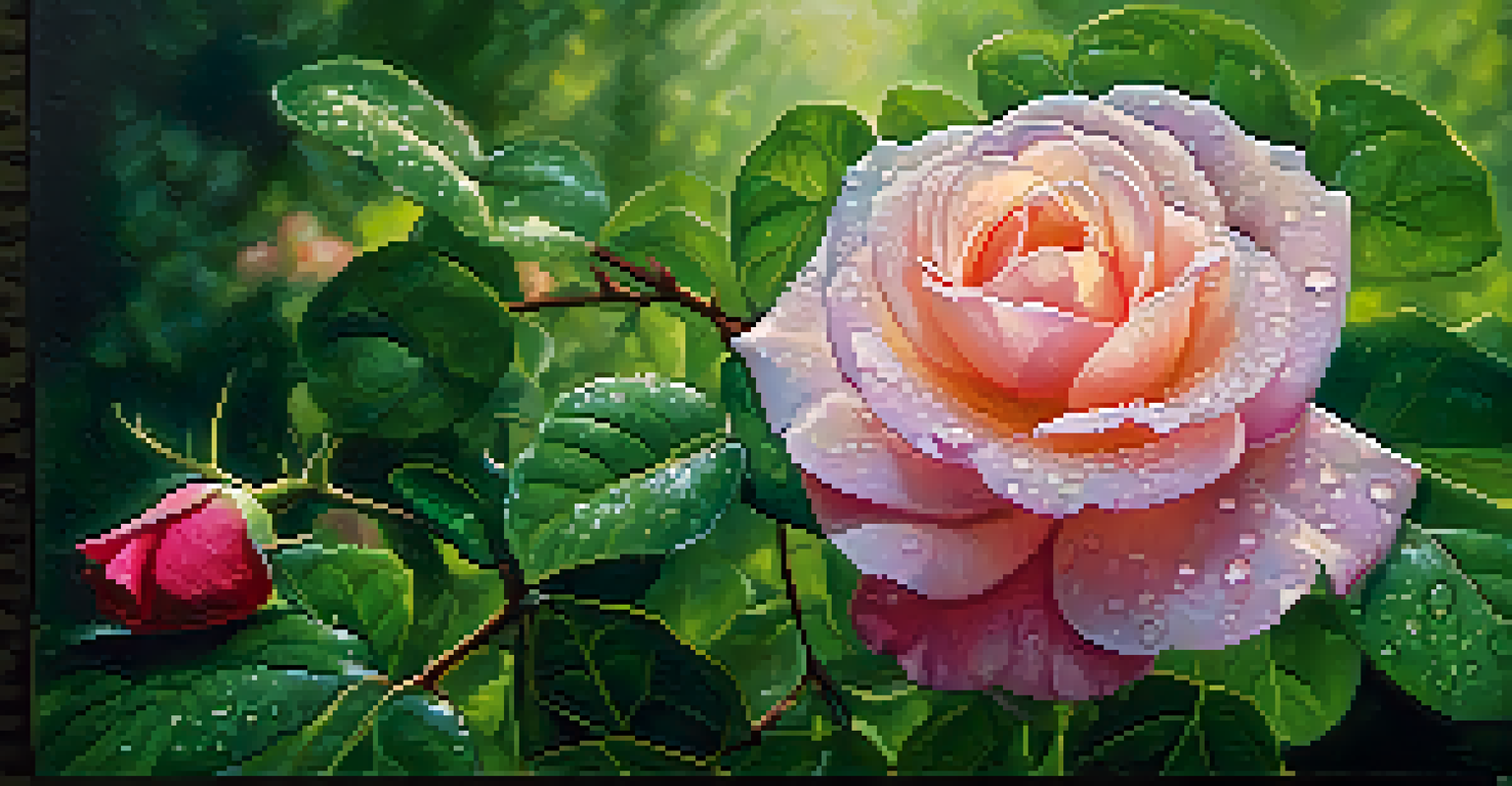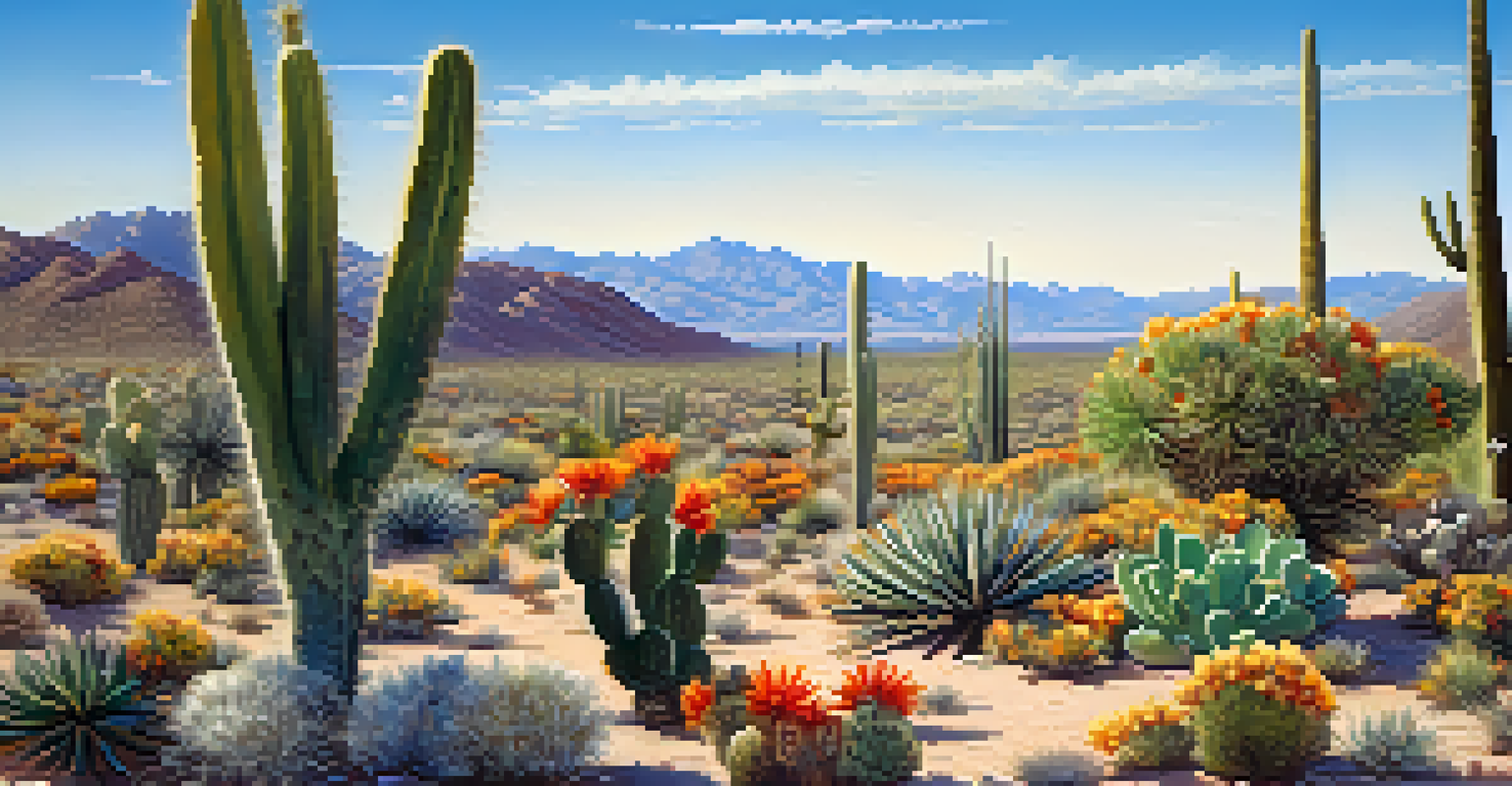Diversity in Flowering Plants: A Global Perspective

Understanding Flowering Plants and Their Importance
Flowering plants, or angiosperms, are a diverse group of plants that produce flowers and seeds. They play a vital role in ecosystems, providing food and habitat for countless organisms. Their ability to adapt to various environments makes them essential for ecological balance.
The greatest threat to our planet is the belief that someone else will save it.
From vibrant gardens to wild landscapes, flowering plants come in an astonishing array of shapes, sizes, and colors. This diversity not only enhances the beauty of our world but also contributes to the health of the planet by supporting pollinators like bees and butterflies. Without them, many ecosystems would struggle to survive.
Moreover, flowering plants have significant economic value, providing resources for food, medicine, and materials. Understanding their diversity helps us appreciate their role in our lives and the importance of conserving these species for future generations.
Global Distribution of Flowering Plants
Flowering plants are found on every continent, thriving in a multitude of climates, from tropical rainforests to arid deserts. This widespread distribution illustrates their incredible adaptability. For example, the Amazon rainforest is home to thousands of species, showcasing the richness of biodiversity.

In contrast, flowering plants in desert regions, like cacti, have evolved unique features to conserve water. This ability to thrive in varying conditions highlights the resilience of these plants and their vital role in sustaining ecosystems across the globe.
Flowering Plants Support Ecosystems
Flowering plants provide essential food and habitat for various organisms, playing a critical role in maintaining ecological balance.
Understanding where these plants flourish offers insights into ecological health and climate change. Areas with declining plant diversity can signal broader environmental issues, making it crucial to monitor and protect these habitats.
The Role of Pollinators in Plant Diversity
Pollinators, such as bees, birds, and butterflies, are integral to the reproduction of flowering plants. They transfer pollen from one flower to another, enabling the fertilization process that leads to seed production. This partnership is a beautiful example of nature's interconnectedness.
Nature does not hurry, yet everything is accomplished.
Diversity among flowering plants often correlates with a rich variety of pollinators. For instance, a garden boasting a variety of flowers will attract different species of pollinators, each specialized for certain types of blooms. This mutualistic relationship enhances biodiversity and ecosystem resilience.
However, declining pollinator populations due to habitat loss and pesticide use threaten this delicate balance. Protecting pollinator habitats is essential for maintaining flowering plant diversity and, by extension, the health of our ecosystems.
Threats to Flowering Plant Diversity
Despite their resilience, flowering plants face numerous threats that jeopardize their diversity. Habitat destruction from urbanization, agriculture, and deforestation is a primary concern, leading to the loss of native species. This loss can disrupt local ecosystems and diminish biodiversity.
Climate change further exacerbates these challenges, altering habitats and shifting the conditions under which many plants thrive. For example, rising temperatures can push certain plant species to higher elevations or latitudes, where they may struggle to survive. Adaptation is not always possible, leading to declines in certain populations.
Pollinators Ensure Plant Diversity
The relationship between flowering plants and pollinators, like bees and butterflies, is vital for seed production and overall biodiversity.
Invasive species also pose a significant threat, outcompeting native flowering plants for resources. These invaders can alter local ecosystems, making it crucial to implement conservation strategies to protect vulnerable plant species and their habitats.
Conservation Efforts for Flowering Plants
Conservation efforts aimed at protecting flowering plants are essential to maintaining global biodiversity. Initiatives range from creating protected areas to restoring habitats, ensuring that both native and endangered species have the space to thrive. Education and community involvement are key components of successful conservation.
For example, botanical gardens and arboretums often play a pivotal role in conserving plant diversity by cultivating rare species and conducting research. These institutions not only preserve genetic material but also educate the public about the importance of flowering plants in our ecosystems.
Additionally, sustainable practices in agriculture and landscaping can help protect local flowering plant populations. By prioritizing native species and reducing pesticide use, we can create environments that support both plant and pollinator health.
Cultural Significance of Flowering Plants
Flowering plants hold significant cultural importance across the globe, influencing art, literature, and traditions. Many cultures celebrate specific flowers, which symbolize various meanings—like love, purity, or friendship. For instance, the rose is often associated with romance, while the lotus holds spiritual significance in many Eastern cultures.
These plants also play a role in culinary traditions, with many edible flowers enhancing not only the flavor but also the visual appeal of dishes. Incorporating flowering plants into cuisine reflects a deep connection to nature and an appreciation for biodiversity.
Conservation is Crucial for Survival
Protecting flowering plants from threats like habitat destruction and climate change is essential to preserving global biodiversity.
Moreover, the preservation of flowering plants is tied to cultural heritage. By conserving these species, we also safeguard the stories and traditions that have been passed down through generations, highlighting the intertwined nature of plants and human culture.
The Future of Flowering Plant Diversity
The future of flowering plant diversity depends on our collective actions today. As awareness of environmental issues grows, more people are advocating for sustainable practices and conservation efforts. This shift in mindset can help preserve the rich diversity of flowering plants for generations to come.
Innovative approaches, such as urban gardening and rewilding, are emerging as ways to support local ecosystems. These methods encourage the growth of native flowering plants, fostering biodiversity even in urban settings. Every small effort contributes to a larger impact on plant conservation.

Ultimately, the future is bright if we prioritize the protection of flowering plants. By embracing their diversity and understanding their roles in our ecosystems, we can ensure a thriving planet that celebrates the beauty and importance of these remarkable plants.